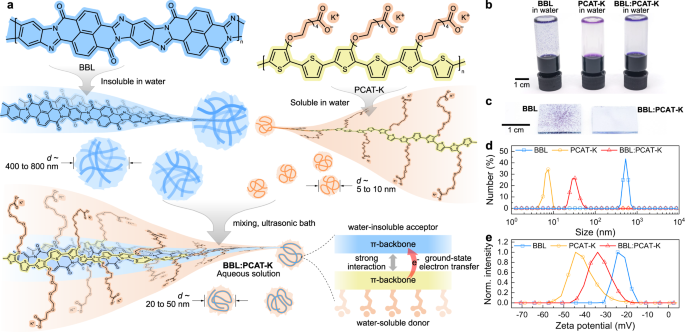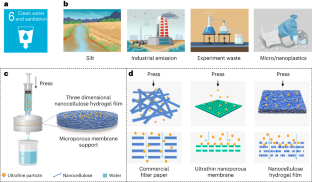2024-01-22 リンショーピング大学
◆この研究は、有機半導体の処理に水を使用することで、有害な溶媒を回避し、持続可能かつ高導電性の新しいインクを生み出すものです。この手法は「ground-state electron transfer」と呼ばれ、材料の性能向上を実証しています。新しい導電インクは有機太陽電池において、伝統的な材料よりも安定性と効率が向上することが確認されました。
◆Simone Fabiano氏によれば、この成果は有機エレクトロニクス分野に革新的な影響を与え、環境への影響が最小限での電子デバイスの大量生産が可能になる可能性があるとしています。
<関連情報>
- https://liu.se/en/news-item/miljovanligare-metod-for-att-skapa-organiska-halvledare
- https://www.nature.com/articles/s41467-023-44153-7
全ポリマーのドナー:アクセプターブレンドにおける基底状態電子移動が、水不溶性共役ポリマーの水溶性プロセッシングを可能にする Ground-state electron transfer in all-polymer donor:acceptor blends enables aqueous processing of water-insoluble conjugated polymers
Tiefeng Liu,Johanna Heimonen,Qilun Zhang,Chi-Yuan Yang,Jun-Da Huang,Han-Yan Wu,Marc-Antoine Stoeckel,Tom P. A. van der Pol,Yuxuan Li,Sang Young Jeong,Adam Marks,Xin-Yi Wang,Yuttapoom Puttisong,Asaminew Y. Shimolo,Xianjie Liu,Silan Zhang,Qifan Li,Matteo Massetti,Weimin M. Chen,Han Young Woo,Jian Pei,Iain McCulloch,Feng Gao,Mats Fahlman,… Simone Fabiano
Nature Communications Published:20 December 2023
DOI:https://doi.org/10.1038/s41467-023-44153-7

Abstract
Water-based conductive inks are vital for the sustainable manufacturing and widespread adoption of organic electronic devices. Traditional methods to produce waterborne conductive polymers involve modifying their backbone with hydrophilic side chains or using surfactants to form and stabilize aqueous nanoparticle dispersions. However, these chemical approaches are not always feasible and can lead to poor material/device performance. Here, we demonstrate that ground-state electron transfer (GSET) between donor and acceptor polymers allows the processing of water-insoluble polymers from water. This approach enables macromolecular charge-transfer salts with 10,000× higher electrical conductivities than pristine polymers, low work function, and excellent thermal/solvent stability. These waterborne conductive films have technological implications for realizing high-performance organic solar cells, with efficiency and stability superior to conventional metal oxide electron transport layers, and organic electrochemical neurons with biorealistic firing frequency. Our findings demonstrate that GSET offers a promising avenue to develop water-based conductive inks for various applications in organic electronics.



